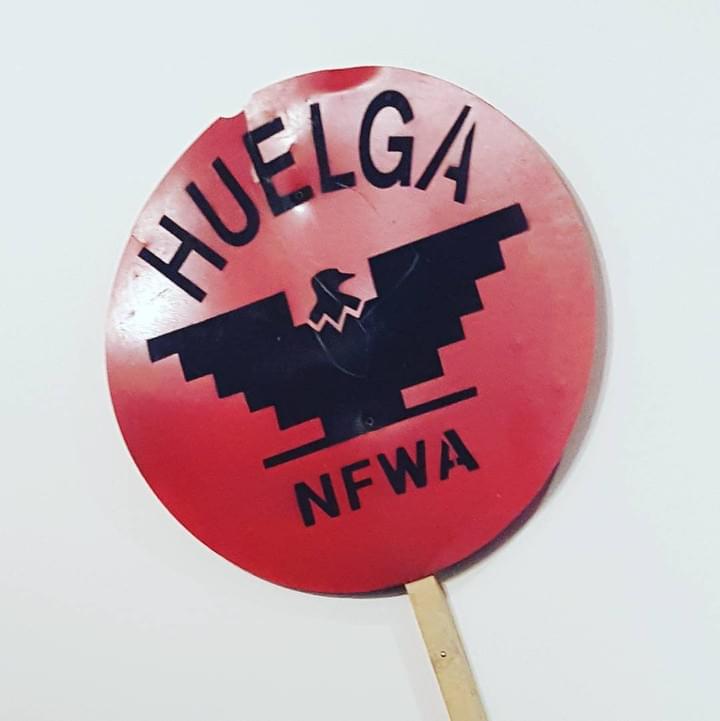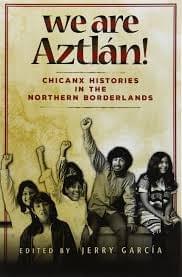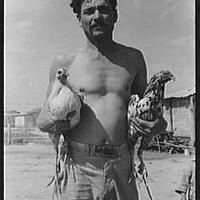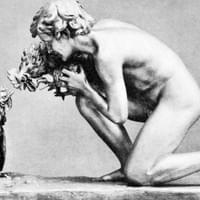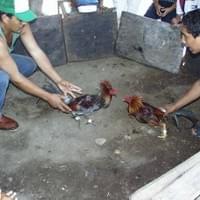
Stare into his face.
A page about Jerry Garcia.
Making books.
Jerry Garcia's published books

CHICANO HISTORY AND CULTURE - WITH PRESENCE, PURPOSE, AND PERMANENCE
Since my first publication while in graduate school, "A Chicana in Northern Aztlan: An Oral History of Dora Sanchez Trevino.” Frontiers: A Journal of Women Studies, Volume XIX, Number 2, 1998, 16-52," I have been fortunate to have worked at a various institutions of higher education who supported my research. The books listed in this section are the result of that support.
I have also been fortunate in taking an interdisciplinary approach to my work. Although not a book publication my article examining cockfighting allowed me to examine Mexican culture through a variety of lenses above and beyond history that included elements of anthropology, sociology, cultural studies, masculinity, sports, and of course history. My latest publication on the Japanese in Mexico also provided a multidisciplinary approach, and allowed me to examine the Japanese and Chinese on both sides of the U.S.-Mexican border.
Much of work would not have been possible without the help of many many colleagues and mentors: Dionicio Valdes, Theresa Melendez, Pero Dagbovie, Leslie Moch, Benjamin Smith, Sharon Bird (ISU), Andrejs Plakans (ISU), Sidner Larson (ISU), John Kicza (WSU), Noriko Kawamura (WSU), and Paul Hirt (ASU). Many firends provided support - Bernhard Riger, Thomas Carrasco (CSS), and Elias Serna (CSS), Linda Heidenreich (WSU).

The Illusion of Borders: The National Presence of Mexicanos in the United States. Dubuque, Iowa: Kendall/Hunt Publishing, 2002.
A collection of essays on the impact and growth of the Mexican origin population in the United States.

Memory, Community, and Activism: Mexican Migration and Labor in the Pacific Northwest. Michigan State University: Julian Samora Research Institute in association with Michigan State University Press, 2005.
Memory, Community and Activism is the first book-length study to critically examine the Mexican experience in the Pacific Northwest. Eleven essays by leading scholars on the Mexican experience in the Northwest shed new light on Mexican immigration/migration, the Bracero program, the Catholic Church, race and race relations, Mexican culture, unionization, and Chicana feminism.

“The Measure of a Cock: Mexican Cockfighting, Culture, and Masculinity.” Pp. 109-138 in Chon A. Noriega and Wendy Belcher, Editors, I AM AZTLAN: The Personal Essay in Chicano Studies. UCLA: Chicano Studies Research Center.
I am especially grateful to Chon Noriega and Wendy Belcher for including my essay in I AM AZTLAN because it has a special meaning to me. Chon and Wendy chose an image I sent with my article that depicts my father at the age of sixteen with his first car and it became the cover image for the publication. The article, I believe, is also important because it delves into the role cockfighting plays in shaping a form of masculinity for working-class Mexican cockfighters.

Mexicans in North Central Washington. Mt. Pleasant, SC: Arcadia Publishing, 2007.
This book is a general overview of the Mexican/Chicano presence in North Central Washington. This book is targeted towards the general population with an interest in local and regional history. This book contains 187 images with captions. Each section begins with a brief essay. I attempted to capture the history and culture of the Mexican origin people in this region of Washington State.

Looking like the Enemy: Japanese Mexicans, the Mexican State, and U.S. Hegemony, 1897-1945. Tucson: The University of Arizona Press, 2014.
My recent publication, Looking Like the Enemy: Japanese Mexicans, the Mexican State, and U.S. Hegemony, 1897-1945 is the first English-language book to study the Japanese experience in Mexico. Mexicans from a variety of perspectives agreed that while foreigners were needed to modernize Mexico, they should never come to Mexico in such numbers that they would change the Mexican “national character” or challenge la Mexicanidad. Thus, the central question throughout the book explores why Japanese Mexicans were treated differently than other Asian groups in Mexico such as the Chinese or their counterparts in the United States. It is an important examination of the tumultuous half-century in Mexico and the U.S. before and during World War II. My book offers illuminating insights into the wartime experiences of the Japanese on both sides of the US-Mexico border. It is a significant contribution to our understanding of the immigrant experience in the Western Hemisphere and to the burgeoning field of borderlands studies.
Although grounded in Mexican and Japanese history, the research for Looking Like the Enemy goes well beyond these histories. Indeed, throughout the book I demonstrate the importance and impact of U.S. hegemony in Mexico and Latin America at the social, economic, cultural, and political level that eventually had repercussions on the Japanese diaspora. Chapter 4 (The Long Reach of the American Empire - Japanese Mexicans, U.S. Hegemony, and Mexican Propaganda, 1941-45) best illustrates the interdisciplinary nature of my research. This chapter explores how the U.S. exploited Mexico during a time of deep crisis and did so using a wide-array of propaganda, economic and political leverage, and subtlety. Most important, I argue that the U.S. ideology and concepts of race were exported throughout the Western Hemisphere to reconfigure the Japanese as the “other” and, hence, their racialization and demonization commenced throughout the region. Finally, I argue that U.S. policy forced Mexico to round up and incarcerate Japanese Mexicans, but with a Mexican flare.
We Are Aztlan! Chicanx Histories in the Northern Borderlands. Washington State University Press, March 2017.
More Things I Am Working On
Images of Mexican Labor in the U.S.

Chicana Labor World War II
Chicanas labored in a variety of industries during World War II. The image above portrays Chicanas halving apricots in Santa Clara, California, June 1943

Braceros in California
Thousands of braceros were imported to the United States during World War II and worked throughout the country. However, California, Oregon, and Washington received the largest numbers. Above are two braceros cultivating beets in California 1940s.

Chicano Youth Labor
Although not well documented, thousands of Chicano children labored alongside their parents during the twentieth century. Above is a Chicano youth laboring in a potato field during the World War II era.

Chicana Labor
Mexican girl bunching broccoli and trimming leaves. John Jacobs farms, Arizona, Maricopa Co., 1940s.

El Cortito (the short one)
The image above is of a Mexican laborer "blocking" beets in Montana circa 1936. The instrument in his right hand is the short-handled hoe (el cortito). This instrument was primarily used in the beet and lettuce industry throughout most of the twentieth century. Due to its debilitating impact on the health of the laborer it was eventually outlawed in the late twentieth century. However, el cortito played a more sinister role as one lawyer who fought to outlaw it stated, “It was flat-out a symbol of oppression—a way to keep control of workers and make them live humbled, stooped-over lives.” Although stoop labor continues to persist instruments that have dangerous health impacts on workers are being eradicated.

Chicana Labor
Mexican girls bunching broccoli. According to the above caption each female laborer earned $2.50 per day. John Jacob Farm, Arizona, Maricopa Co., 1940s.

Braceros Prepare for the U.S.
Mexicans who have been accepted for farm labor in the U.S. follow their contracts down a long row of tables at which typist fill in answers to questions about the candidates.

Bracero Worker in Oregon
A Mexican labor poses in a potato field in Oregon. During the World War II era thousands of braceros entered Oregon under contract and work along side domestic and POW (German) labor.
Tearin' it up.
Like Batman.

My wife Khanh took me to an awesome book fair in Ho Chi Minh City. Even though I could not read most of the books a book fair is still awesome in any language!

Khanh and I...Ho Chi Minh City and the first Starbucks in Vietnam. Vietnamese coffee still better!

Our Villa during our honeymoon in Vietnam...so nice!

Khanh and I in Hoi An, Vietnam
When I first went to Vietnam I was not sure what to expect. I have traveled to Vietnam on five occasions and have really fallen for this country. Vietnamese culture has many commonalities with Mexican culture, which I appreciate. With the help of my wife Khanh and in regards to its history I have moved beyond the Vietnam war. Looking forward to doing more cockfighting research in Vietnam!
Sea Mar Museum of Chicano/a/Latino/a Culture
Take a look and enjoy!

Be a Peacemaker!
A sentence or two describing this item.
Title Text
A sentence or two describing this item.
My Blog
Welcome to the blog! You can see my blog posts below.
There are no published blog posts yet.I Want To Hear From You...
If you have questions, suggestions, etc., let me hear from you...
© 2015

